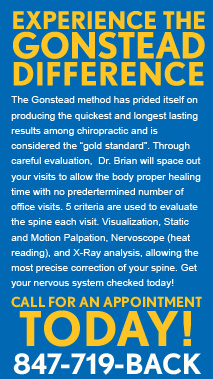Sunscreen: Could it be Causing More Damage than Good?
Sunscreen: Could it be Causing More Damage than Good?
Although you may think you’re saving yourself and your children by lathering up at the beach, you may actually be
doing more harm than good. Have you ever checked the label on your sunscreens to figure out exactly what you’re
putting on your skin? Or have you taken the time to research just how protective your sunscreen is? The sunscreen
you’re using may actually be more damaging than the sun.
What’s in most sunscreens? The most common active ingredients in sunscreen include: oxtinoxate, oxybenzone,
octisalate, homosalate, avobenzone, and octocrylene. Oxtinoxate (Octyl methoxycinnamate), present in over
90% of all sunscreens, has been shown to be toxic to mouse cells at concentrations lower than that in sunscreens, and
the effects more than doubled when the cells were tested under UV rays. Oxybenzone is a derivative of benzophenone,
one of the most powerful free radical generators used to start chemical reactions. A study by the CDC revealed
that 97% of Americans are contaminated with oxybenzone, which has been linked to allergies, hormone disruption,
and cell damage. Avobenzone is also a powerful free radical generator that can easily be absorbed into your skin.
Practically anything you put on your skin can be absorbed into your body, creating free-radicals and other harmful effects.
What’s more cancerous: the sun or your sunscreen? Did you know your sunscreen may be more likely
to cause cancer than the sun? Common sunscreen ingredients are suspected or known carcinogens and/or hormone
disrupters, including diethanolamine, triethanolamine (DEA, TEA), padimate-o, octyl dimethyl PABA, benzophenone,
oxybenzone, homosalate, octyl-methoxycinnamate (octinoxate), salicylates, and parabens. According to the
Skin Cancer Foundation, over 600,000 new cases of skin cancer are detected every year, and that number is on the
rise. Why is skin cancer suddenly so prominent? Studies found that nations where chemical sunscreens are heavily
promoted have actually seen a higher rise in melanoma. Sun exposure in adequate amounts actually prevents cancer
through vitamin D production and immune system stimulation.
But if I need protection, at least sunscreen keeps the rays off me, right?
Yes, staying out in the sun too long can be harmful to your body, but most sunscreens don’t do a very good job at protecting you from either the
UVA or UVB rays. To begin with, many sunscreens only protect from one type of ray. Another problem with sunscreens
is that they don’t last that long. As stated above, most sunscreens use chemicals that break down within the
first hour, leaving you completely unprotected and frequent applications increases your chemical exposure.
What’s the difference between the two rays? UVA rays are the longer rays that penetrate deeper into your
body and are believed to be the cause of aging skin.. They are present all year round and can pass through clouds and
even windows. UVB rays are the shorter rays that are mostly responsible for sunburn. Only about 5% of the rays can
make it through our ozone, but because of their higher energy, they can still be damaging. UVB rays are also responsible
for helping our body produce vitamin D, which is essential for maintaining our health. At first, you’ll have to be
careful about how long you spend in the sun. However, your body will eventually be able to build up to a few hours
out in the sunlight, and will need even need that extra sun to continue producing the same amount of vitamin D.
Do I need to get any sun? YES! It’s important to get some unprotected rays to produce vitamin D. The recommended
amount of sun is about 20 minutes a day in which your body will make about 20,000 units of vitamin D.
The government recommendation is about 400 units a day, nowhere near enough! Not only is 400 units not enough,
by regulating your vitamin D intake through synthetic pills, you can actually overdose. But you can’t overdose on
sunlight! Your body knows when to turn off vitamin D production.
Sun Exposure and Sunscreen recommendations:
Sun exposure is necessary and good for you, just don’t burn! You can safely stay out in the sun without any protection until your skin turns a light pink color and then cover
up. It is only when you burn that the suns rays are damaging to the skin. Many experts recommend covering up or
staying out of direct sunlight between 10am and 3pm when the suns rays are strongest. If you or your children must
or choose to be out in the sun during the peak hours of the day and need to use sunscreen, take time to study the ingredients.
It may be hard to find a non toxic sunscreen at a retail store and doing diligent research online may
be your best source. Look for zinc oxide or titanium dioxide as the active ingredient when choosing sunscreen
and zinc oxide appears to be the safer of the two. Zinc oxide appears white and many new
products are using small nanoparticles where there is concern of easier skin absorption. There are a
few products that contain non nanoparticle zinc oxide that does not appear white and contains no
synthetic materials. To save you time here is one such product: Green Screen® Organic SPF 20
Sunscreen made by Kabana skin care. Green Screen Organic SPF 20 Sunscreen contains these certified organic
and natural ingredients: 25% Zinc Oxide, Eldorado Springs Artesian Water, Certified Organic Extra Virgin Olive
Oil, Certified Organic Jojoba Oil, Vegetable Glycerin, Certifiied Organic Shea Butter, Vegetable Emulsifying Wax,
Vegetable Vitamin E
